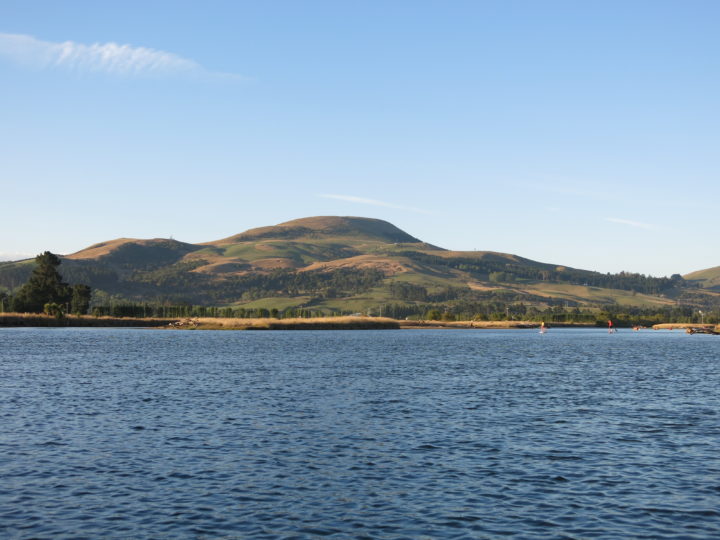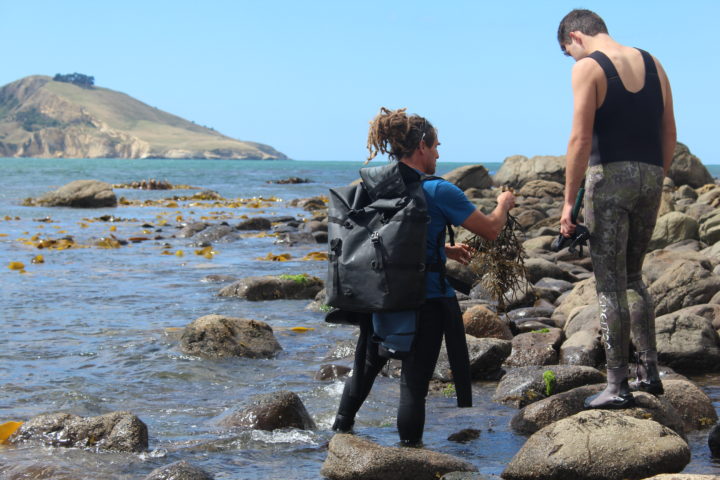East Otago Taiāpure Research
He Pataka Wai Ora
2015-2016
He Pataka Wai Ora is a research project that monitors the health of the Waikouaiti River. Led by Kāti Huirapa Rūnaka ki Puketeraki, the aim of He Pataka Waiora is to provide a solid baseline of the health of the river in 2015/2016 for future monitoring. This will enable Kaitiaki to see if the environmental health (Waiora) of the river is improving and make informed management decisions regarding the river, particularly when the new mātaitai on the Waikouaiti is gazetted. Nine traditional Mahinga Kai sampling sites on both the estuary and the river inland were chosen for both cultural and scientific value. Sampling happens twice a month throughout the year so a robust dataset for all seasons is built up. Along with nutrients and physical parameters, transects up from the shore line will record the state of the banks in terms of vegetation and substrate. This work is funded by the Te Wai Māori Trust (http://waimaori.maori.nz/research/purpose.htm).
-

-

-

-

-
 Becky and Tom Kerr classifying and counting stream invertebrates at one of the Mahinga Kai monitoring sites
Becky and Tom Kerr classifying and counting stream invertebrates at one of the Mahinga Kai monitoring sites
-
 This adult Kanakana was found swimming up one of the south branch Mahinga Kai monitoring sites in the Waikouaiti Mātaitai. Kanakana are a nationally threatened vulnerable species, with fossil records dating back to 450 million years ago. Scientists and community members were delighted to see a few kanakana swimming in our streams during the monitoring days.
This adult Kanakana was found swimming up one of the south branch Mahinga Kai monitoring sites in the Waikouaiti Mātaitai. Kanakana are a nationally threatened vulnerable species, with fossil records dating back to 450 million years ago. Scientists and community members were delighted to see a few kanakana swimming in our streams during the monitoring days.

Aquaculture and Fisheries 301/421-Field Methods for Assessment of Fisheries and Aquatic Habitats
A five day field course based out of Puketeraki Marae, AQFI301/421 focuses on teaching students tikanga (custom) and kawa (protocol) at the marae and around fisheries. Guided by members of the TMK team, students design research projects to investigate methods for assessing growth in key species, commonly used monitoring designs and practical limitations presented when monitoring aquatic systems.
The course has run since 2014, and some common reoccurring research projects include:
- The link between pāua densities & the invasive kelp species Undaria
- Patiki (Flounder) Populations within the Waikouaiti Estuary
- Waikouaiti Estuary/River Health & Eel population parameters
- Tuatuas in the Taiāpure
- Pāua accessibility within the Taiāpure
- Adult & Juvenile pāua populations in the Huriawa Rahui
- Blue Cod (rawaru) populations within the Taiāpure
CARIM (Coastal Acidification: Rate, Impacts and Management)
The CARIM project is co-ordinated and led by NIWA and is designed to establish the scale of acidification and how it is affecting New Zealand coastal ecosystems. Monitoring is taking place at the Firth of Thames, Karitane and Nelson Bays – three locations that are important for iconic species including kutai (Perna canaliculus), pāua (Haliotis iris) and tamure (Pagrus auratus), which are ecologically, economically and culturally important in New Zealand.
Monitoring in these regions is undertaken using SeaFET ocean pH monitoring units which report and store pH measurements through the sensing of the density of hydrogen ions when directly submersed in a liquid. The SeaFET monitoring units are contained within water proof housings which are then fixed to permanent moorings. With support from the East Otago Taiapure; Brendan Flack with the Hauteruruku ki Puketeraki Nga Waka Club and members of the TMK team from the University of Otago, are working in partnership to maintain and retrieve the Karitane moorings and sampling units which sit at two depth strata.
The project aims to knit together exisiting frameworks with new research directions and collaborations to enable scientific break throughs into the impacts and mitigation of coastal acidification. Data collected from the CARIM unit will support several University of Otago student projects. “The CARIM project will provide more coherent models that include both direct and indirect ecosystem effects to obtain a clearer picture of how coastal acidification will affect these iconic species, and how we can manage those effects.”
Tātai kōrero ka ngaro, tātai kōrero ka rangona.








